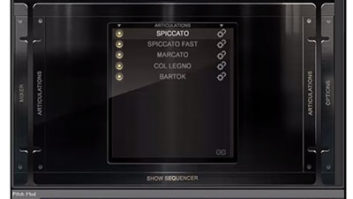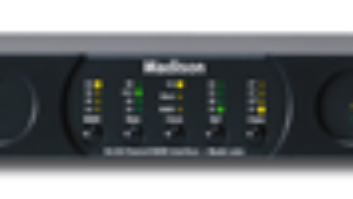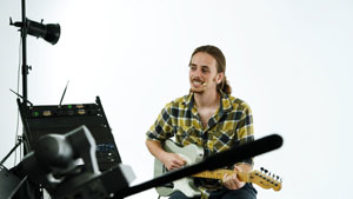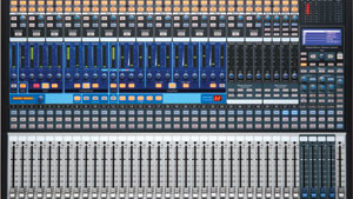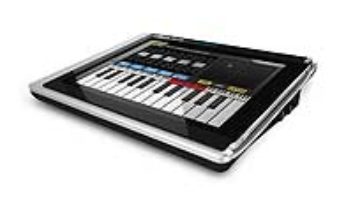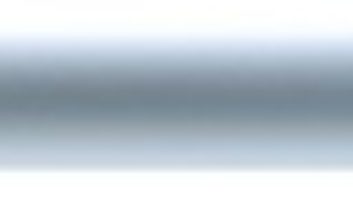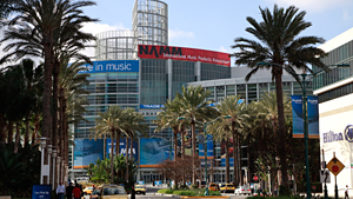In today’s studio, “resource utilization” is the watchword. Studio managers must efficiently reconfigure rooms quickly and put any given piece of gear to work where it’s needed. Gone are the days when a room could operate with a more or less fixed configuration of gear, supplemented by rentals paid for by the client.
Digital signals are a godsend in this regard by allowing for lossless signal runs over long distances. But the sheer number of signals and lines involved can be overwhelming, and nonterminated patchbays can be dangerous to signal integrity. Centralized and automated routing of digital audio provides flexibility for rapid configuration changes, while making sure that transmission lines are handled properly at all times and eliminating wear and tear on cables and connectors.
DIGITAL AUDIO TRANSMISSION FORMATS
Resolving the alphabet soup of digital audio transmission formats is an important benefit of centralized signal routing. AES3, AES3-id (single-ended AES), S/PDIF and TDIF vary in electrical characteristics and connectors. Conversion between 2-channel and multichannel multiplexed formats such as ADAT Lightpipe and MADI is more complex, and is better handled by dedicated converter units.
Most routing systems on the market are focused on the AES3 family. Larger routers may use TDIF or Sony-style multi-pin connectors for cost and panel space reasons. Signal routers for ADAT Lightpipe are on the market as well, handling eight to 15 Lightpipe inputs and outputs. Conversion units to translate between Lightpipe and multiple AES3 signals are also available.
At present, dedicated routing systems for MADI are thin on the ground. Manufacturers such as Euphonix that are committed to MADI usually provide routing facilities within their own systems, but options for intersystem routing are limited because of reduced demand and the difficulty of handling the higher bandwidth and run-length limitations of MADI signal lines.
ROUTER DESIGN
For the studio, there are three factors to consider when designing a routing system to handle digital audio: signal integrity, number of inputs and outputs, and control features.
A centralized routing signal will carry a large number of signal lines, many with long runs. It is imperative that the system preserves the integrity of data and clocks in every signal, with careful termination and buffering, and low signal leakage or crosstalk.
The “eye pattern” is the key tool to evaluate signal integrity in digital signals. This pattern is formed by triggering an oscilloscope or digital measurement system with the signal word or bit clock. The result is a composite of millions of individual state changes, immediately showing noise, impaired rise and fall times, or other forms of signal degradation.
Figure 1 shows a progression of eye patterns, taken from real life, that illustrate how an AES3 signal can be degraded by poor signal handling. As the rising and falling edges lose integrity, the “eye” becomes smaller. The actual timing of signal transitions becomes uncertain, adding jitter to the embedded clock and increasing the risk of data error. With seriously degraded signals, a receiving device may be unable to latch onto the clock or recover data successfully.
Centralizing the routing for a multi-room studio complex calls for larger numbers of signal inputs and outputs, with stiff requirements for termination. Design difficulties rise quickly as routing systems scale up. Whereas an 8×8 matrix for a small room has only 64 different paths, a 256 in/out router has more than 65,000.
Routers for multiroom studios also must provide for remote control and monitoring from any location, whereas single-room systems can operate from the front panel. In both cases, the essential control function is the ability to preset memories for routing configurations. Larger systems naturally need to store a greater number of setups and provide better means to label and organize setups so that multiple operators can use them.
PATCH POINT MATRIX VS. SYNCHRONOUS ROUTING
In asynchronous routers for the production studio, appropriately terminated input buffers feed a matrix that routes selected signals to the drivers for the designated outputs. In a well-designed router, a careful design of input and output circuits, coupled with proper layout and grounding practices, ensures that signals pass from input to output without a significant increase in jitter. This type of router is completely agnostic with regard to the format or data content. As long as the design isolates and buffers a signal appropriately, there will not be any interaction, and signals of different sample rates and bit resolutions can be mixed freely.
The other digital audio router design type is synchronous, where digital audio signals are completely or partially decoded and routed using time-domain multiplexing. This is a more costly and complex method to route signals. Apart from cost, a disadvantage to this method, as far as the recording studio is concerned, is that all input signals must be synchronous, and therefore of the same sample rate. Any incoming “wild” feeds not already synched to a common clock must be sample rate-converted.
In a broadcast environment, synchronous TDM-based routing allows any signal or combination of signals to be switched instantly, allowing for seamless switching. However, if the signals in question are already clock-synchronous, then they can be switched within an asynchronous matrix without any issues. Synchronous routers ensure that this is the case under all circumstances and provide assurance in critical broadcast environments.
Synchronous routing also makes it easier to implement signal-handling functions, such as channel splitting, status bit flipping or sample-rate conversion. In most studios, these functions are not often used and are typically assigned to dedicated units or handled directly within recording, editing and mixing systems. For recording studios, the additional costs of synchronous signal routing are usually not justified.
PRODUCTS: MEDIUM-SCALE ROUTERS
Several companies have made digital routing systems a specialty for the project studio and larger installations. Here are a few.
A company focused on signal routing and monitoring control, z-Systems offers a rapidly expanding line of digital audio routers that it refers to as Digital Detanglers. The z8.8 and z16.16 models offer 8×8 or 16×6 matrices with a choice of AES, S/PDIF or optical connectors, all controlled exclusively from the front panel.
The z8.8r and z16.16r “professional” models eschew optical connectors, but offer control via the z-rrc remote panel or by computer. These models also combine multiple AES3 connections onto multipin connectors to expand to the larger z32.32r, z64.64r, z128.128r and, most recently, the z256.256r.
z-Systems recently introduced the Opti-Patch and Optipatch+ Lightpipe Routers. The basic OptiPatch offers eight Lightpipe inputs and eight outputs; OptiPatch+ expands that to 15 ins and outs in the same-sized package, all controlled exclusively from the front panel. It also makes the z-8.8a for AES3-to-ADAT signal conversion. In order to combine multiple AES3 signals, the z8-8a includes sample-rate conversion.
Audio-Service manufactures the D.A.I.S. (or DAIS) system, a modular router using Yamaha I/O cards to provide any combination of input and output signal formats. The DAIS is a dual system, with the basic unit carrying up to 56 stereo inputs and outputs in its synchronous matrix; all inputs are resolved to a common wordclock. The unit also includes a passive section with a 16×16 asynchronous matrix. The DAISPLUS is similar, with an 80×80 active matrix but without a passive section. Both units are limited to sample rates of 44.1 or 48 kHz. Control is via Windows.
Audio Services is one of the few companies currently offering a MADI option. The D.A.I.S. MADI 32 provides up to a 68×68 stereo-patch matrix. The D.A.I.S. MADI 64 provides 80×80 crosspoints. The MADI patches support samples rates up to 96 kHz. Control is by Windows PC.
Friend-Chip offers the DMX Series, a family of compact, asynchronous routers for S/PDIF, AES or ADAT connections. The DMX 12 is a fixed-configuration unit, with six S/PDIF coaxial inputs and outputs on RCA connectors with six TOSLink optical connectors. The TOSLink connectors can be used for optical S/PDIF signals or ADAT. The unit carries 50 presets, and can be controlled from its front panel or via MIDI SysEx.
The DMX 16 and DMX 32 are modular systems that offer various inputs and outputs and conversion between different signal formats. I/O modules come in blocks of four inputs and outputs. Conversion units provide sample-rate conversion with wordclock reference when multiple 2-channel signals are combined in an ADAT or TDIF connection. The single-rackspace DMX 16 accepts four modules of any type, while the DMX 32 houses eight. As with the DMX 12, all control is via front panel or MIDI SysEx.
Little Labs offers the Digital Audio Mastering Router, a 4×4 matrix in a single rack with straightforward operation. Signal paths are created by locking push buttons on the front panel. What the device lacks in sophisticated control, it makes up for in ease of operation and, more importantly, signal integrity.
A full digital audio router capable of handling crosspoint routing, mixing and summing of signals, the new, redesigned Audio Engine from Logitek accepts analog or digital inputs and can output signals in either format. The Audio Engine can be configured from 8-in/8-out to 64-in/64-out; for larger installations, multiple systems can be linked. Control is accomplished via physical or software-based router controllers. Prices start around $6,000.
Frontier Designs recently introduced the Apache, a 12×12 matrix for ADAT or optical S/PDIF, in a compact single-rackspace unit. Apache maintains signal integrity by reclocking input signals to its own clock, allowing for cascading of multiple units without accumulation of jitter. The device may be operated from its front panel with 12 preset memories or via MIDI SysEx control. The front panel also includes status lights to show signal activity on any input or output.
M-Audio offers the DigiPatch 12×6, which has six coaxial and six optical S/PDIF or ADAT inputs, and six outputs, each delivered on both optical and coaxial connectors. The unit can be operated from its front panel with 50 built-in memories or via MIDI SysEx.
LARGE-SCALE ROUTERS
Many manufacturers of broadcast routers offer digital audio routing systems as part of their product lineup. Some of these are large but are often engineered to broadcast requirements that can make them less cost-effective for recording studio applications.
NVision manufacturers a range of audio-routing products from 32×32 to 1,024×1,024 or larger, with options for both asynchronous and synchronous routing. Control is via serial port, with a choice of control protocols. The smallest member of the family, the NV3064, is available with 32×32 or 64×64 AES3 pairs, in synchronous or asynchronous configurations. The NV3256 offers 256 AES input and outputs in different combinations of synchronous and asynchronous signals in the same frame. NV3512 is a fully modular system occupying one or more full-sized racks. Designed as the ultimate in flexibility, each rack unit provides up to 512×512 matrix switching for any combination of digital audio signal connectors, in any combination of synchronous and asynchronous.
PESA offers the TDM3000, a large-scale modular system using TDM technology and engineered with the demands of broadcast in mind. The TDM3000 can be configured using four-rackspace units, from a 32×32 matrix up to 1,024 inputs and 1,024 outputs in any desired combination. Modules for timecode and machine control routing are also available and can be installed in the same rackframe.
Sierra Video Systems manufactures several dedicated AES3 routers in its Shasta and Yosemite products groups. The Shasta products are mostly combined switchers for video and audio, but 8×8, 16×16 and 32×32 digital audio-only configurations are offered. The Yosemite product includes audio configurations up to 128×128, in various combinations of synchronous and asynchronous patching.
Snell & Wilcox offers the IQBRT, an 8×8 synchronous digital audio switcher with sample-rate conversion on all inputs and gain adjustment to correct differences in reference level, as well. Twenty-four-bit audio is handled at standard sample rates up to 48 kHz.
TESI offers the DR48, a two-rackspace, asynchronous, crosspoint matrix configurable from 16×16 up to 48×48. Front panel control is unavailable, but the company supplies control software that runs under Windows.
As the digitalization of production continues, we can expect that the needs for dedicated routing products will only increase, with more entries at both the top and bottom ends of the market, and more devices to handle MADI signals.
Gary S. Hall operates the world’s only solar-powered piano lounge.
FUTURE DIRECTIONS
To date, digital audio routing in the studio has followed the point-to-point paradigm of analog signals. Digital audio transmission standards carry two, eight or up to 56 channels on a single line, but it’s still a fixed number.
Meanwhile, technologies such as Ethernet and FireWire/IEEE1394 have evolved to the point where they are capable of carrying substantial numbers of digital audio signals. Applying these technologies to signal routing is a tempting prospect, potentially offering same advantages as computer networking, where many users can share resources in a very flexible way using a single connection.
Several manufacturers now offer systems that use networking technologies. Most of these focus on fixed installations, touring sound and remote recording, rather than generalized studio production.
Current network technologies are limited by bandwidth. Studio applications also require low latency, which can be difficult to achieve when large numbers of arbitrary signals are handled over a network. As Gigabit Ethernet, FireWire-2 and other higher data-rate technologies emerge, we can expect to see more and more application of these to professional production.
The most prominent technology to route digital audio over networks is CobraNet. Developed and supported by Peak Audio, CobraNet is currently incorporated into products and systems from Peavey/MediaMatrix, QSC Audio, Rane Corporation, Crown Audio and others. Numerous other companies have CobraNet products at various development stages.
At its current level of development, CobraNet carries up to 64 channels of 20-bit audio on a single conductor. Major installations for the Sydney Olympic Stadium and the Experience Music Project in Seattle, among others, have proven that CobraNet is robust and scalable. This is clearly a technology to watch.
Otari offers the Network Audio Distribution System, which uses IEEE1394 connections to handle up to 96 channels of 24-bit audio at 48kHz sample rate or 48 channels at 96kHz. Individual model ND-20 “head” units are equipped with mic or line inputs, D/A outputs, AES or TDIF I/O as required, with up to 32 channels available in each unit. As many as 63 ND-20s can be connected to the network.
For the studio, the most ambitious of the systems that multiplex audio data onto external serial buses is the Nexus system from StageTec of Germany. The system uses modular head units to acquire digital or analog signals in various formats, determined by system configuration, and multiplexes them onto one or more fiber-optic cables to be picked off by corresponding decoding heads. The maximally expanded system is claimed to be able to handle a crosspoint matrix of 4,096×4,096 (though we didn’t have a chance to test that). The system provides options for DSP functions, format conversion, and transmission of nonaudio data such as machine control and MIDI. Among others installations, Nexus systems are in use at Skywalker Sound and Fox Networks.
Yamaha has the MLan family of products that is based on IEEE1394. The company manufactures MLan adapter cards for many of its popular synths, samples, as well as the 02R and 03D digital mixers. Yamaha also offers an 8-channel audio and MIDI interface to link standard devices into the network. Yamaha is actively soliciting licensees to expand the range of products and applications for MLan.
